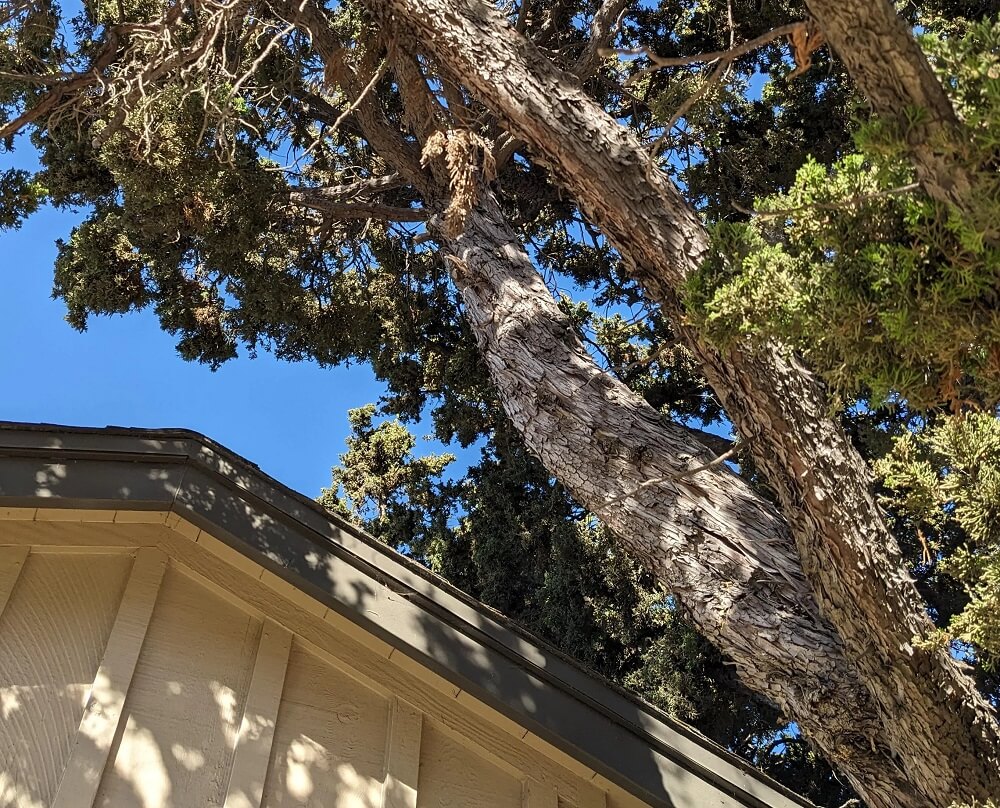A Redditor went to r/arborists for advice on whether or not to remove a tree at their husband's request.
Four photos show the tree growing alongside the corner of the house. The trunk is beautiful, with layers that intertwine up into a full canopy over the house.
!["[Is there] something we should be aware of?"](https://www.thecooldown.com/wp-content/uploads/2024/11/thoughts-on-this-tree-near-property-v0-09rsaqodkyyd1-1.jpg)

The OP wrote that there were no inspection notes on the tree but that one landscaping company expressed concern about the tree. Other companies said to let it be.
"What are your thoughts on removing this tree? Should there be something we should be aware of? We plan to get a few arborists out here to inspect it before making the decision," the OP wrote.
The tree recruited several people to defend it in the comments.
"That's a great tree," someone admired.
"Unless you have explicit proof that this tree is causing damage you should keep it. The tree intercepts storm water, keeps your home cooler in the summer, warmer in the winter, provides habitat and food for wildlife, improves curb appeal, impedes strong winds. I could go on," a Redditor commented.
"That tree is a banger," a certified arborist confirmed. "Wish I had that."
As the Redditor's comment explained, trees come with so many benefits. They play a giant role in cooling the planet, removing pollution from the air, and increasing property values. Exposure to trees also improves our health by reducing stress, according to the National Wildlife Federation.
🗣️ What's the hardest thing about taking care of your yard?
🔘 Mowing the lawn 🏡
🔘 Controlling weeds 🌿
🔘 Keeping pests at bay 🐿️
🔘 I don't have a yard 🤷
🗳️ Click your choice to see results and speak your mind
As long as the plants and trees surrounding your house aren't threatening any structural damage, there's no reason to remove them. The more the merrier — as long as they're native.
Native plants naturally occur in a specific area, having evolved with the region. Non-native plants, like invasive species, are the ecological equivalent of Decepticons. They will show up and compete for resources, taking over landscapes and becoming harmful to local plants and wildlife.
Native lawns, as opposed to traditional lawns, require less water, fertilizer, and pest control, which means less maintenance and toxic chemicals all around. Rewilding your yard lets nature do all of the work for you.
They are a godsend for pollinators who need native plants to survive. Pollinators are crucial to our food supply as they account for one in every three bites of food we eat, according to the USDA. Humans need pollinators, so by proxy, we need native plants to survive, too.
A partial lawn replacement is a great way to test the waters. There are tons of natural lawn options to choose from: clover lawns, vegetable gardens, wildflowers, tapestry lawns, and even xeriscaping for those living in ultra-dry climates. Pick which one best suits the aesthetic you're going for and grow from there.
Join our free newsletter for easy tips to save more and waste less, and don't miss this cool list of easy ways to help yourself while helping the planet.
!["[Is there] something we should be aware of?"](https://www.thecooldown.com/wp-content/uploads/2024/11/tree-foundation1.jpg?w=1920&h=800)








